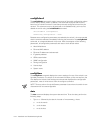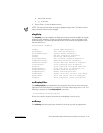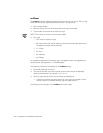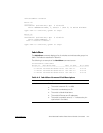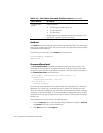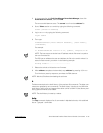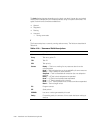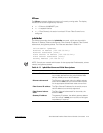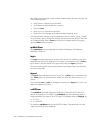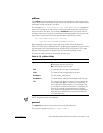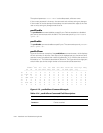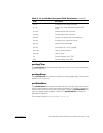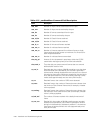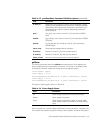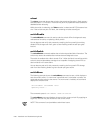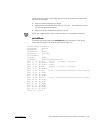
4-22 Installation and Troubleshooting Guide
After each prompt, the current value is shown inside brackets; the user may enter one
of the following actions:
Press <Return> (Keeps the current value)
An IP address in conventional dot (.) notation
The word none
Press <Ctrl><c> (Cancels any changes)
Press <Ctrl><d> (Accepts any changes but skips remaining input)
A final prompt asks whether to set IP addresses to the new values. Typing installs
the new values; typing 4 delays the changes until the next switch reboot. If the Ether-
net IP address being used to Te l n e t to the switch is changed and the user types ,
then the Te l n e t session is closed.
%!#
The ipAddrShow command displays the switch’s IP addresses. The fields are
described in Table 4-11.
The login command allows a user to log in to the switch with a different user name
and password, without first logging out. If the user is connected by way of a Te l n e t or
log-in session, then the session is left open unlike using the logout command.
This command is typically used to gain access to commands that are not allowed at
the current user level.
The logout command allows a user to log out from a Te l n e t , log in or serial port ses-
sion. Te l n e t and log in connections are closed, the serial port returns to the 4
prompt.
The commands exit and quit are accepted as synonyms for logout, as is <Ctrl><d>
typed at the beginning of a line.
!#
The nsAllShow command displays the 24-bit Fibre Channel Port (FCP) IDs of all
devices in all switches in the fabric. The nsAllShow command optionally takes an
integer parameter, the value of the FC-PH type. The possible values for FC4Type are:
5 - FC-IP
8 - SCSI-FCP
For example, nsAllShow
8
shows all SCSI-FCP nodes. If the parameter is not pro-
vided, then all Nx_Ports are displayed.



